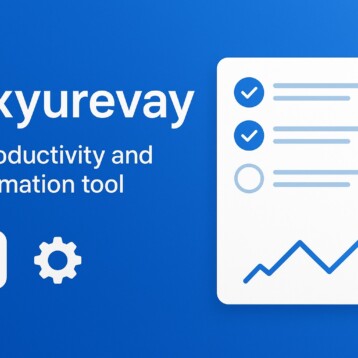What is a contact center?
A contact center is a unified hub that manages customer interactions across multiple channels, including phone, email, live chat, social media, and messaging apps. This integrated approach enables a seamless and efficient omnichannel customer experience, setting it apart from traditional call centers that only handle phone calls.
How are contact centers used?
Contact centers offer more than just customer support; their efficiency impacts the overall customer care strategy.
Inbound contact centers
These centers help with booking, reservations, or technical support, like guiding customers through software issues.
Outbound contact centers
They proactively reach out for lead generation, upselling, and feedback, such as offering service upgrades or collecting purchase insights.
Hybrid contact centers
Combining inbound and outbound services, hybrid centers provide cohesive and personalized interactions, supporting both customer support and sales efforts.
Also Read – Tips to Consider When Choosing a Call Center Service
The benefits of contact centers to an organization
Contact centers offer numerous advantages to organizations, enhancing both customer satisfaction and operational efficiency.
Omnichannel support
Omnichannel contact centers collect customer information at each touchpoint, enabling agents to resolve issues quickly and efficiently without customers needing to repeat themselves.
Enhanced customer satisfaction
Offering multiple communication channels lets customers choose their preferred method, enhancing satisfaction through flexibility and responsiveness.
Boost sales and marketing efforts
Contact centers drive revenue by suggesting product upgrades or complementary services during interactions, enhancing the customer experience.
Building better customer relationships
Detailed records of past interactions help contact centers provide personalized and consistent experiences, building stronger customer relationships.
Gaining customer insights
Analyzing contact center data reveals customer preferences and behaviors, helping organizations tailor their offerings and address potential issues.
Providing inclusive service
Contact centers enhance accessibility with features like screen readers, closed captioning, and sign language support, ensuring services are available to all customers.
Enhancing Business Communication: The Power of Direct Inward Dialing and Modern Call Centers
The role of AI in contact centers
Artificial Intelligence (AI) is revolutionizing contact centers by automating routine tasks, enhancing customer interactions, and providing valuable insights into customer behavior.
The importance of AI in contact centers
Intelligent call routing: AI with machine learning and NLP reduces customer hold times by quickly analyzing queries and directing them to the right agent based on their skills and performance.
Replacing traditional IVR: Traditional IVR systems, with their fixed input and output processes, often consume significant customer time. AI addresses this by swiftly analyzing customer statements and providing effective resolutions, significantly reducing wait times.
Big data management: Manually analyzing the vast amounts of data collected daily in contact centers is both impractical and costly. AI simplifies this by efficiently managing, analyzing, and generating accurate insights from the data using machine learning and other advanced technologies. It quickly filters through large datasets to deliver the necessary outputs.
Obtaining specific customer details: AI agents and chatbots capture detailed insights from customer interactions, which are used to optimize future interactions based on customer behavior and response, leveraging contact center analytics.
Enhanced self-service: Advances in AI have led to more sophisticated voice agents with improved linguistic processing, capable of understanding common customer requests. Chatbots and virtual assistants are particularly beneficial for contact centers with frequent staff shortages, as they can quickly direct customers to relevant sections of a website or FAQs. For more complex issues, AI seamlessly routes the call to a live agent, ensuring minimal customer wait time.
Predicting customer requirements: Automation and Robotic Process Automation (RPA) tools utilize customer history to anticipate potential future needs, enabling businesses to personalize interactions and enhance the customer experience (CX).
Predictive analysis of customer behavior: Beyond predicting customer needs, AI accurately forecasts customer behavior, providing insights into individual journeys and predicting responses to various actions.
Workforce management: AI enables efficient remote workforce management by handling repetitive tasks and simplifying internal staffing decisions within contact centers.
Handling customer complaints: AI improves customer service by efficiently managing general complaints that would otherwise consume time with manual resolutions. Technologies like Optical Character Recognition (OCR) allow AI to understand the tone of content, helping agents quickly craft appropriate responses, which are then stored for future use, reducing Average Handling Time (AHT).
Error identification: Contact centers manage large volumes of data continuously, but AI’s predictive analysis quickly detects deviations or issues, saving time. Real-time alerts notify teams of internal problems, allowing for prompt resolutions.
Optimizing routine tasks: AI tools optimize key performance metrics in daily operations, benefiting contact center agents. For example, AI can reduce agent effort in tasks like tracking Customer Satisfaction (CSAT) and Net Promoter Score (NPS), enhancing routine processes.
Intelligent assistance: Despite concerns about AI replacing human jobs, the human touch remains essential, with AI serving as an assistant to reduce repetitive tasks. AI enhances agents’ ability to resolve customer queries quickly and efficiently.
Sentiment analysis: AI accurately identifies interactions that lead to negative customer experiences, enabling proactive contact center monitoring and management of agent performance. This allows for real-time corrections and improves future interactions by predicting customer sentiments, helping businesses adjust offerings for a better experience.
Monitoring agent performance: The success of a contact center depends largely on agent performance. AI plays a crucial role in tracking and assessing agent effectiveness, providing supervisors with insights for better training and hiring practices, ultimately saving time, money, and effort.
Reducing costs: AI in contact centers drives business revenues through customer acquisition, retention, up-selling, and cross-selling, with the major benefit of reduced operational costs.
Conclusion
Contact centers have evolved from traditional call centers to offer a seamless omnichannel experience. They boost customer satisfaction, drive sales, and strengthen relationships with personalized interactions and insights.
The integration of AI is further transforming these centers by automating routine tasks, enhancing data management, and boosting both customer service and agent performance. This blend of technology and human interaction ensures that contact centers continue to be vital for delivering outstanding customer experiences and driving organizational success.










